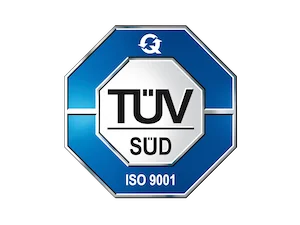Powder Preparation
Precise control over the manufacturing processes enables us to provide consistent sintered ceramic components.We mix our refined powders to exacting specifications allowing the control of characteristics from raw to ready-to-form powder.The diversity of our equipment enhances our flexibility so as to efficiently support small or large batch size, fine or coarse grain size and rapid changeover between materials.
Forming
Isostatic Pressing is the use of force pressures of equal proportion from all directions, commonly used to form complex ID configurations by compressing powder around a pin.It is suitable for the manufacture of uniformly compressed blanks and large parts that are appropriate for machining in the green state.
- Extrusionconsists of forcing a plastic mix of a ceramic powder through a constricting die to produce elongated shapes that have a constant cross-section. This is a standard process for tubes, rods and bar stock material.
- Injection Moulding of ceramics is used mainly for very intricate or high volume components. The cost for injection mould tooling is expensive but when amortized across high volumes it can mean a lower per part cost.
- Mechanical Pressing utilizes steel or carbide tooling by filling the tool with powder and applying uniaxial pressures to compress the powder.
Green Machining
Green machining is considered as an alternative to the use of cost-intensive shaping tools. It covers the chip removal of advanced ceramics with a defined as well as an undefined cutting edge in the green state or the state after debindering and prefiring. The machines in our pant include CNC mills, CNC lathes drilling equipment, cut-off saws, surface grinders, rotary grinders, as well as many machines that have been made in-house. We provide the highest quality milling, turning, drilling, and tapping to tolerances of ±.01mm. To achieve tighter tolerances diamond grinding must be employed.
Glazing
Glazing can serve to colour, decorate, strengthen or waterproof an item. For instance, spark plugs are glazed to reduce areas of potential arcing in high voltage environments. This process involves dipping, brushing or spraying a glass coating onto the surface of the fired ceramic. The glazed ceramic must then be fired to 820 °C – 1450 °F to sinter the glazed coating.
Grinding
Incredibly high levels of accuracy and smooth surface finishes can be achieved on precision ceramics by diamond grinding allowing tolerances of only a few microns. Standard machine shop equipment can be modified with diamond plated or impregnated wheels, drills and assorted tools, as well as necessary recirculating and filtered coolant systems. However, diamond grinding is a relatively expensive process; consequently, if a design can be produced to "as-fired" tolerances, the overall cost of the component is reduced.
Metallizing & Plating
Responding to the needs of our customers, we have developed the needed processes that provide us with the ability to offer metallized and plated components. These processes are ready to meet your needs, offering the highest quality results as measured by internal testing and rigorous industry standards.
Electroplating &Electroless Plating – Our choice of electroplating materials includes soft and hard Gold, Nickel, Silver, Copper, Platinum, Rhodium, Tin and Palladium producing industrial components with exceptionally high-quality coatings.

